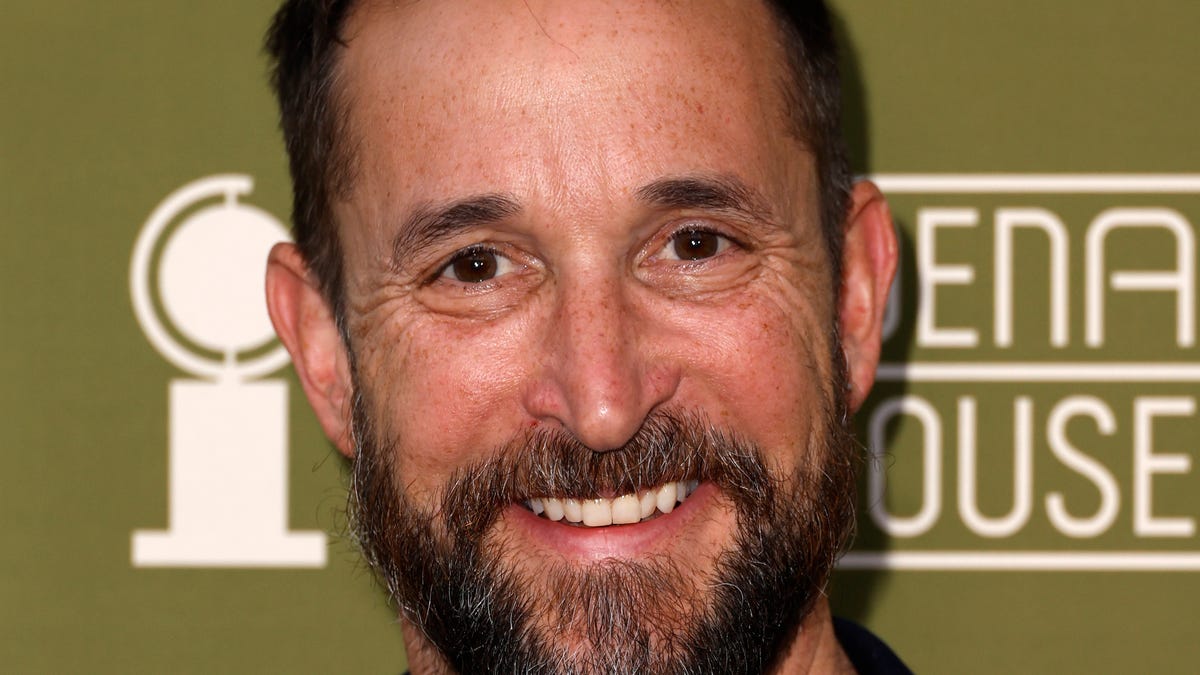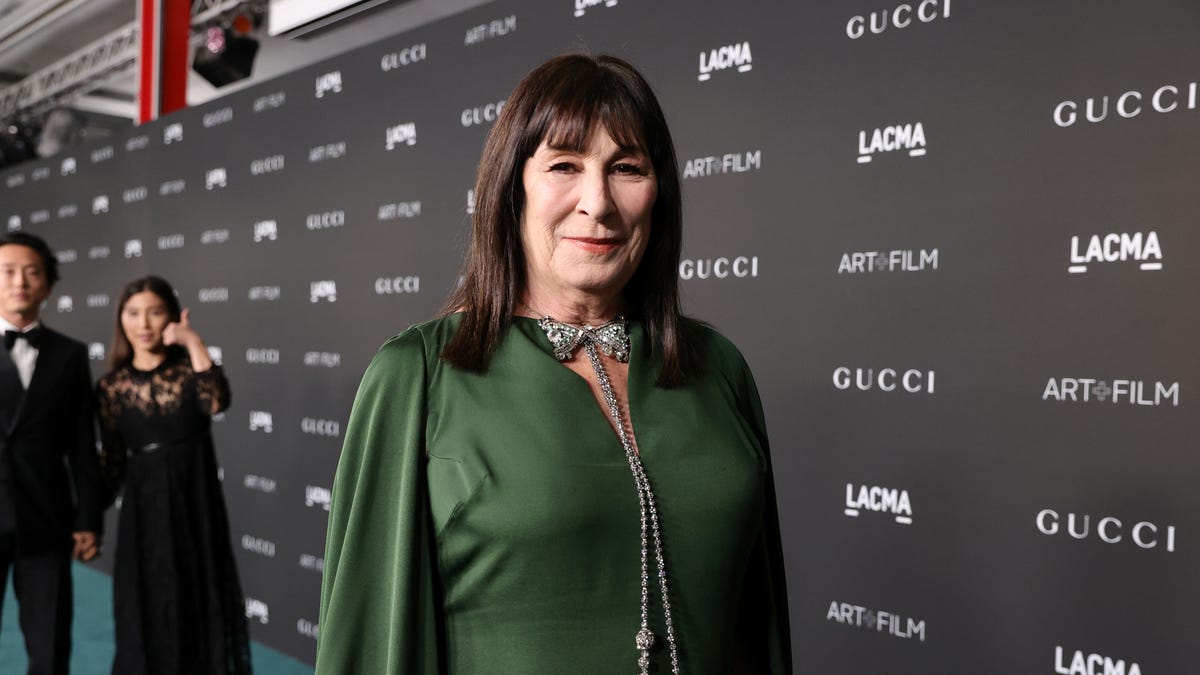‘White Lotus’: Sarah Catherine Hook on Piper’s virginity, sex scenesEntertain This!
Blog
-

Want to teach your kids to work together? Read ‘Cartoonists Club’
In a world where kids can become anything, Raina Telgemeier and Scott McCloud are hoping they become cartoonists.
Telgemeier has become a household name for parents whose kids love her graphic novels “Smile” and “Drama.” She’s been called “The Beatles for children.” But decades ago, she was the kid in grade school with an interest no one else liked.
Her dad noticed her burgeoning talent for cartoons and gave her a copy of “Understanding Comics” by Scott McCloud, a 1993 history and how-to guide. Now, McCloud and Telgemeier have teamed up to publish a new how-to manual for younger kids. With “The Cartoonists Club” (Scholastic, ages 8-12, out now), kids don’t have to feel like Telgemeier did when she was young.
“To be able to give kids something that gets them on that path a little sooner has always been the goal. And kids always ask me anyway. They want tips, they want advice, they want tricks,” Telgemeier tells USA TODAY. “Once I realized no one was going to do it if I didn’t, I thought who better to ask to collaborate with me than the creator of ‘Understanding Comics’ himself?”
In ‘Cartoonists Club,’ librarians and parents are ‘true superheroes’
“The Cartoonists Club” is both a story and a manual – it has both practical, fun exercises for kids (like learning what “plewds” are) and a lovable band of characters who form a deep friendship around comics.
Supporting the after-school club is the school library’s media specialist, Ms. Fatima, who plays a crucial role in teaching and encouraging the young cartoonists. McCloud and Telgemeier say the character is an “amalgam of the amazing librarians that we have met over the last couple of decades.” It’s fitting, then, that the authors kicked off this week as honorary chairs for the American Library Association’s National Library Week, visiting libraries across the country amid sweeping federal cuts from the Trump administration.
Not only are school libraries crucial third spaces for kids to “be silly” and make friends, McCloud and Telgemeier say, but librarians and teachers can be the difference between a kid pursuing their passion or getting discouraged and giving up.
“Just like Ms. Fatima, I had teachers and librarians who understood that work, who understood the value of comics and so I was very lucky that way,” McCloud says. “I’m always cognizant of the fact that not everybody is so lucky to have a Ms. Fatima.”
McCloud and Telgemeier are intimately familiar with the “naysayers” – adults who think cartoons are something to grow out of. But graphic novels are a method of storytelling, the book reminds, and that has no expiration date. In “The Cartoonists Club,” one character’s father is originally dismissive of his son’s passion, calling it “childish.”
“I wanted to offer just a little bit of perspective for that guy, that parent, whoever that is, who sees that their kids love comics and they’re like ‘Eh, it’s not my thing, I don’t really care.’ We want the parent to join the kid in reading the book,” Telgemeier says. She adds, “There’s nothing dumbed down about what kids’ books are. Kids’ books are really sophisticated and they’re really thought-provoking.”
How to draw cartoons: It’s okay to make mistakes and be messy
As the kids in “The Cartoonists Club” prepare for a big comic book conference, they learn plenty of tips and life lessons for drawing and collaborating. Telgemeier says she encourages parents to embrace and make space for boredom to spawn creativity.
The kids also play a teamwork game called “Quanto Comics.” They learn how to make “minicomics” that can be done quickly on just a single sheet of paper. Both are easy for readers to mimic in real life.
In one scene, shy and talented Lynda feels frustrated that her friends can churn out drawings quickly while she spends all her time trying to get a single drawing right. Ms. Fatima and the group help her “mess up” her drawing, teaching her to embrace early, imperfect doodles.
“Blank pages also kinda scare me. What if I ruin them with all my mistakes?” Lynda says in the book. Her friend Howard replies: “Perfect is for robots. Mistakes are where the people are!”
“The message of the book isn’t even just it’s okay to make mistakes – I think we’re almost encouraging kids to make some mistakes on purpose,” McCloud says.
Raina and Scott worked together on ‘Cartoonists Club’: Now they want kids to collaborate too
Neither Telgemeier nor McCloud has co-authored a book of this magnitude. It was a learning experience on compromising and borrowing techniques, not unlike what the kids learn in their club. McCloud, a meticulous planner, praised Telgemeier’s style of discovering the story as you go along.
“It’s really hard to tell where Raina ends and Scott begins,” Telgemeier says. “But that’s the way we wanted it.”
It’s what the characters learn in the book, and also what Telgemeier and McCloud hope kids will learn off the page, too: Stories work better when we tell them together. Telgemeier recalls her own experience of sharing her vulnerable autobiographical comics with people for the first time. Like the character Lynda, she sheepishly refused to share her work because she was “striving for perfection.” But when Lynda opens up her sketchbook and shows her classmates the deeply personal story, they see her more fully.
“That’s one of the beautiful things about writing and art is it makes people feel less alone because they could see themselves on the page,” Telgemeier says. “And maybe that means they can see themselves making something too.”
Clare Mulroy is USA TODAY’s Books Reporter, where she covers buzzy releases, chats with authors and dives into the culture of reading. Find her on Instagram, subscribe to our weekly Books newsletter or tell her what you’re reading at [email protected].
-

Christina Haack reveals anxious attachment style after 3 divorces
Hannah Montana star Emily Osment files for divorce after five months of marriage
Emily Osment has filed for divorce from Jack Anthony after five months of marriage and declared that it just “didn’t work out.”
Bang Showbiz
Christina Haack is flipping the script on the narrative surrounding her love life.
The “Flip or Flop” star, who’s been the subject of three public splits, revealed that she “recently discovered” she has anxious attachment style in an Instagram post Tuesday.
“As someone who recently discovered I have anxious-attachment (not sure what took me so long 🤪) and for sure a history of co-dependency issues .. things can be challenging and by ‘things’ I mean ‘me,’” Haack captioned the post.
After announcing her split from contractor Josh Hall last year, Haack went public with her new boyfriend, Christopher Larocca, in February.
“Meeting an unexpected good man who has his own amazing career, life & hobbies (who also happens to have zero jealousy) can at times feel strange for someone who has had the opposite,” Haack continued in the caption. “At 41 I’m finally learning about safe communication, independence during commitment and a relationship that is NOT 0-100.”
She added that “I am for sure guilty of putting pressure on others.”
“Facing my own insecurities has forced me into doing the shadow work I’ve been avoiding,” she said, telling fans “it’s time to break the cycle.”
What is anxious attachment style?
The Cleveland Clinic says adults with an anxious attachment style “may worry that their partners or friends don’t love them” which can cause “a deep fear of rejection or abandonment.” They also say that those with an anxious attachment may “seek validation from someone outside of themselves,” become more prone to codependent behaviors and become distressed when relationships with others end.
Christina Haack exes Tarek El Moussa, Ant Anstead: Where do they stand?
In May 2024, HGTV announced that Haack would star with Hall in “The Flip Off,” a “Flip or Flop” spinoff competition series against ex-husband Tarek El Moussa and his wife “Selling Sunset” alum Heather Rae Young El Moussa.
But last July, Haack and Hall, 44, both filed divorce documents in California, citing irreconcilable differences, according to filings obtained by USA TODAY. The divorce has not yet been finalized. They duo has been married since October 2021.
Despite bitter divorces with both El Moussa and second ex-husband Ant Anstead, she has recently repaired relationships.
Haack and the El Moussas frequently appear in social media videos together and starred in “The Flip Off” as a trio earlier this year, revealing in one episode that she is now on good terms with Anstead, too. Haack and her second husband, who is dating Oscar winner Renée Zellweger, posed in an Instagram post with 5-year-old son Hudson last month.
She also shares two older children — 14-year-old Taylor and Brayden, 9 — with El Moussa.
Contributing: Taijuan Moorman
-

Randy Travis represents a positive use of AI at Grammys on the Hill
Who Holds The Record For The Most Grammy Wins Of All Time?
Beyoncé holds the record for the most Grammy wins in history, with 32 awards. She cemented her status as one of the most successful artists in Grammy history.
Georg Solti is next with 31 wins.unbranded – Entertainment
WASHINGTON – Nearly 12 years ago, Randy Travis flatlined three times in the midst of a stroke.
The debilitating effects of the medical trauma left him mostly unable to speak and walk.
But the country singer whose career thrived from the ‘80s to the ‘00s with No. 1 hits including “Diggin’ Up Bones,” “I Told You So” and “Forever and Ever, Amen,” made an unexpected return to the charts in 2024 through the use of artificial intelligence.
“Where That Came From” was created using software to recreate Travis’ distinctive twang and merge it with a 2011 recording of the song.
On Tuesday, Travis was hailed as the 2025 Creators Leadership Award honoree at the annual Grammys on the Hill event, which pairs the music industry with Congress to advocate for artists’ rights.
The topic of AI – which also took the spotlight at last year’s gathering – sparked conversation among musicians and producers including Pentatonix singer Scott Hoying, who hosted the event, singer/producer Kenyon Dixon and renowned producer/composer Giles Martin.
But while most discussions focused on the negative aspects of AI – stealing the vocals, notes and likenesses of public figures without permission – Travis represents a productive use of the technology.
With wife Mary Davis holding his arm, a bright-eyed Travis, who still struggles to walk and talk, said it felt “wonderful” to be recognized while Davis expounded on Travis’ return.
“It’s so important for him to give back to music what music gave to him,” she said as the pair stood on the red carpet at The Hamilton in D.C. “I wanted so bad to hear his voice again and when we had the opportunity, not only did I want to do it selfishly, but to see him at the soundboard working elbow to elbow with his producer, there was a whole new energy out of Randy.”
Travis is expected to be on Capitol Hill Wednesday to help reintroduce the bipartisan No FAKES Act (Nurture Originals, Foster Art and Keep Entertainment Safe). First proposed in 2023 by Sens. Chris Coons, D-Del.; Marsha Blackburn, R-Tenn.; Amy Klobuchar, D-Minn.; and Thom Tillis, R-N.C., the legislation has been tweaked and aims to protect Americans from deepfakes and voice clones, allow platforms to promptly remove unauthorized deepfakes and protect First Amendment use for news reporting and satire.
Along with Travis, Reps. Linda Sánchez, D-Calif., and Ron Estes, R-Kan., were also honored for their efforts to assist independent artists with the HITS Act (Help Independent Tracks Succeed), which allows tax relief for the cost of sound recordings.
The 90-minute event featured performances from several artists including Paul Overstreet, who co-wrote “Forever And Ever, Amen” and urged the crowd of about 200 to sing along as he played guitar; soul/gospel singer DOE, who moved listeners with her tender ode to a friend in need, “I’m So Glad We Met”; and Hoying, who ended the night with an impressive medley of 20 songs that won Record of the Year at the Grammys, including the Eagles’ “Hotel California” and Roberta Flack’s “Killing Me Softly With His Song.”
-

Noah Wyle politely declines Jennifer Hudson spirit tunnel dance
‘The Jennifer Hudson Show’ Spirit Tunnels become an internet sensation
“The Jennifer Hudson” staff pumps up celebrity guests by sending them down the Spirit Tunnel.
Noah Wyle feels a pit in his stomach when he thinks about dancing publicly, but Jennifer Hudson is letting him off the hook.
In a Tuesday appearance on “The Jennifer Hudson Show,” the “Pitt” star, 53, explained why he politely declined to dance down the program’s spirit tunnel. On Hudson’s show, guests are invited to boogie their way down a hallway backstage, dubbed the spirit tunnel, while staffers clap and chant for them. The result is a clip that frequently goes viral on social media.
But Wyle joked that if he were to do the same, “It would have triggered a bigger breakdown than I had on (‘The Pitt’) two weeks ago.”
The “ER” alum told Hudson he doesn’t like to dance in public, and he had a very specific story to explain why: The actor said he swore it off ever since he tried, and failed, to perform the worm at a classmate’s bar mitzvah in 1984.
“I got into some kind of inverted position, and it all collapsed on me, and then I tried to stick it, and I didn’t stick it,” he recalled. “Ever since then, I’ve just opted out of the public dance.”
Wyle noted he has watched Hudson’s show and seen guests gleefully journey down the spirit tunnel, but he quipped that if he did so, the clip would just be of him wincing and saying “no!”
“Nobody needs to see that,” he said. “Thanks for letting me off. Maybe if I come back, I could baby step it.”
Fans did get to see that, though, when the show shared a clip of Wyle jokingly walking down the hallway looking pained and cowering in fear as staffers clapped.
But on a serious note, Hudson told Wyle she wasn’t going to “push” him to partake in the trend and that he should only do so if he feels comfortable, and fans applauded the singer for the consideration.
“I love that you can choose not to do the spirit tunnel,” one Instagram comment said. “It wouldn’t be a (spirit) tunnel if it was forced upon people. I love the respect for (people’s) triggers and comfort zones.”
Stars who have participated in the spirit tunnel trend include Keke Palmer, Lee Jung-jae and Aaron Pierre. Pierre’s dance down the hallway went especially viral, drawing more than three million views on YouTube and more than six million likes on TikTok.
Hudson later joked on the show that the “Mufasa” star’s spirit tunnel clip “was the first time we actually had to turn off the comments on our social media, because it turns out, he was too hot for all y’all to handle.”
-

Anjelica Huston cancer battle is now ‘in the clear,’ she reveals
Val Kilmer, ‘Top Gun,’ ‘Batman Forever’ star, dies at 65
Val Kilmer portrayed larger-than-life characters, such as Jim Morrison, Doc Holliday and Batman, throughout his prolific acting career.
Anjelica Huston is revealing she is four years “in the clear” after a private “bout with cancer.”
Huston, 73, said in a new interview she was diagnosed after the release of her 2019 movie “John Wick: Chapter 3 – Parabellum,” telling People magazine why she decided to keep her diagnosis private in a story published Wednesday.
“That was a very serious moment for me,” Huston said. “I managed to survive it, and I’m proud of myself.
“It’s not something that came lightly,” Huston continued. “It came as a big shock, but it made me conscious of what I shouldn’t do, of places I shouldn’t go. One of those places was taking life too seriously. So now when the opportunity arises, I laugh, and I try not to make a big deal out of things.”
Huston, whose form of cancer was not detailed in the story, told People that “I’m at the four-year mark, and that means so much to me,” adding that she is “in the clear.”
The “Prizzi’s Honor” star told People she is speaking up six years after the start of the ordeal to help others.
“Sometimes you feel like you don’t want to talk about it for the obvious reasons, but there’s a lot to be said for talking about it and getting it out there and celebrating the fact that one’s come through,” Huston said. “Life is tenuous and wonderful. It also gives you the idea that the world is big, and you can somehow match up to it. That you’re ready for whatever happens.
“It’s a fantastic thing. I’m very proud of myself, and I’ve been very lucky. My doctors have been wonderful,” the Academy Award-winning actress added. The “Smash” alum also told the magazine about her celebration after finding out she was cancer-free, saying she “just walked in my garden and smelled the roses and thought how clever I was.”
Now, a half-decade after her diagnosis, Huston is set to star in “Agatha Christie’s Towards Zero” which premieres April 16 on BritBox.
-

See Handmaid’s Tale actors' transformations in and out of characterTV
See Handmaid’s Tale actors’ transformations in and out of characterTV
-

'Chicken jockey' movie trend causes chaosEntertainment
‘Chicken jockey’ movie trend causes chaosEntertainment
-

Mariska Hargitay’s mom Jayne Mansfield is her newest case
Mariska Hargitay reveals she was raped by a friend
Mariska Hargitay has revealed in a first-person essay for People magazine that she was raped by her friend when she was in her 30s.
New York Post – Page Six
Mariska Hargitay has spent decades solving made-for-TV mysteries. Now, she’s turning to her own.
The “Law & Order: Special Victims Unit” star will tackle the story of her late mother, actress Jayne Mansfield, in “My Mom Jayne,” a new documentary from HBO documentary.
The project marks Hargitay’s directorial debut and a departure from her well-worn role in the entertainment industry as a familiar face and hallmark of network television. It also represents the first public exploration of Mansfield’s death by one of her children.
“This movie is a labor of love and longing. It’s a search for the mother I never knew, an integration of a part of myself I’d never owned, and a reclaiming of my mother’s story and my own truth,” Hargitay said in a release Tuesday announcing the project. “I’ve always believed there is strength in vulnerability, and the process of making this film has confirmed that belief like never before.”
Mansfield, an actress and beauty icon who reached her heyday in the 1950s and early ’60s, died at 34 in a 1967 car crash that later became the stuff of urban legend. A classic blonde bombshell, she was largely viewed as an alternative to Marilyn Monroe and wrapped the press corps around her pinky with eye-popping publicity stunts often involving a wardrobe malfunction.
Hargitay is among Mansfield’s five children and one of three she shared with actor Mickey Hargitay. She married the former Mr. Universe winner in 1958 and starred alongside him in several films before their divorce in 1964.
Mariska Hargitay, along with her two brothers, was in the car the night of Mansfield’s fatal crash, sleeping in the backseat. Her onscreen image as Olivia Benson, the no-nonsense detective grounding NBC’s “Law & Order: SVU” for over two decades, could not be more different from her mother’s.
Where Mansfield was bubbly and sex-forward, Hargitay is stoic and self-serious. The new documentary will aim to wed the two as the 61-year-old actress looks back on her mother’s life with a new appreciation.
The documentary “follows Mariska as she seeks to know, understand, and embrace her mother for the first time,” the release reveals.
“Through intimate interviews and a collection of never-before-seen photos and home movies, she grapples with her mother’s public and private legacy and discovers the layers and depth of who Jayne was, not only to her audience but to those who were closest to her,” it continues.
How to watch Mariska Hargitay, Jayne Mansfield documentary
The documentary will premiere in June on HBO and be available to stream after on Max.

